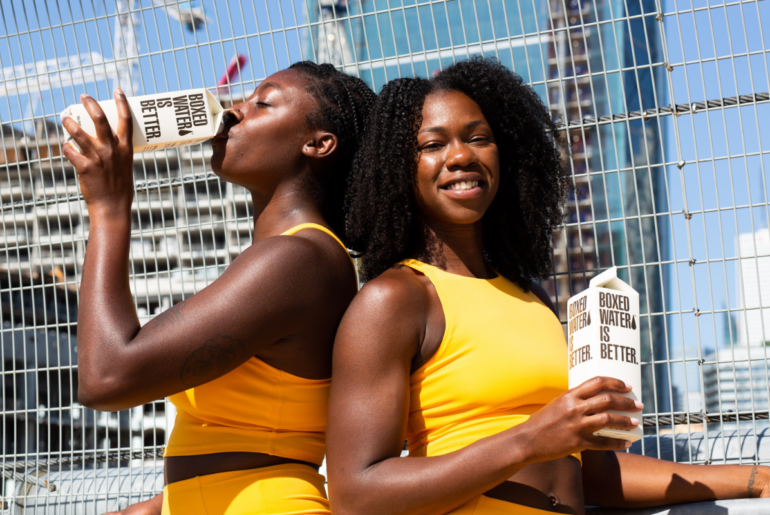With high competition and a seemingly endless supply of options for consumers, brand advocacy has never been more important for marketers.
What is brand advocacy?
Simply put, brand advocacy is a fancy term for good ol word-of-mouth. When you have a cohort of satisfied consumers advocating for other consumers to buy your product or service, you’ve got brand advocacy. These actions then influence brand awareness, brand reputation and ultimately, drive purchase decisions.
Why is brand advocacy important?
Make no mistake, a brand absolutely positively cannot succeed without brand advocacy. It is vital to a business that consumers recommend, talk about, refer, and share your brand with other people.
The biggest benefit of brand advocacy is driving authentic content for your brand. Today’s consumers have more ways to learn about products and services anywhere at any time and they demand more authentic and relatable content to help guide purchase decisions. Research shows that word-of-mouth is behind 20-50% of all new purchases. There’s a reason why many people consider brand advocacy the holy grail of marketing.
And while many brands already know this, oftentimes brand advocacy is viewed as simply the byproduct of producing a quality product or service or executing a good marketing campaign. While that is certainly true in many cases, many marketers miss that brand advocacy doesn’t have to be just an organic aftereffect. You can proactively organize, scale and measure an advocacy marketing strategy that can skyrocket customer acquisition, secure loyalty from existing customers, and help you dominate your marketing positioning over competitors.
How do you build brand advocacy?
The steps involved in building brand advocacy are to focus on mobilizing brand advocates (i.e consumers who are eager to share about your brand), activating them in an engaging way, and optimizing the strategy to encourage the highest levels of conversion.
Step 1 – Mobilize Brand Advocates
One of the great things about brand advocates or brand ambassadors is that they love to identify themselves if given the opportunity. Your job as a marketer is to create as many opportunities as possible for brand advocates to step forward. Mobilizing brand advocates can be done through either short-term campaigns or long-term relationship-building.
Short-Term Advocacy Activation vs. Long-Term Advocacy Building
One of the key times to spark short-term advocacy is directly after purchasing and experiencing your brand. This is especially relevant for direct-to-consumer brands and those whose revenue is driven through eCommerce channels. Delivering brand advocacy call-to-actions on thank you pages, email confirmations, and delivery updates is an easy way to foster short-term advocacy.
Other short-term advocacy strategies can include things like referral promotions or sweepstakes for sharing reviews. Short-term brand advocacy can also be generated through compelling social media activity and let’s not forget the elusive viral video. While these short-term strategies are great, they are typically one-off campaigns that build highly transactional engagement.
Long-term advocacy is about fostering a relationship with brand advocates where they feel valued and heard. This is hard to achieve through an email database or loyalty program, which is why many brands are turning to online brand communities.
An online brand community offers an engaging destination to mobilize brand advocates and can elevate their connection to your brand overall. In a study of brands who use TINT to power their online brand community, Net Promoter Scores increase by 63% among advocates in the community. If you’re thinking about starting a brand community, here’s our guide on knowing if you’re ready.
Step 2 – Activating Brand Advocates in an Engaging Way
If you talk to any economist, they’ll tell you incentives rule all. And while brand advocates love your brand, they do still appreciate some motivation to grab the microphone and start singing your praises.
Incentives are often viewed as the material rewards obtained for behaving in a certain way, but incentives can also be more intrinsic, such as social incentives (gaining a certain kind of reputation) and moral incentives (gains in our conscience from doing the right thing) or fulfilling a need for self-expression or curiosity. The key to getting it right with brand advocates is finding out what motivates individual consumers and delivering tailored communication that grabs their attention.
Each consumer has unique interests, values and is experiencing different life stages. Personalization is a core foundational element in building a strong brand advocacy strategy. If you can find the match between your brand objectives and your consumer’s values, brand advocates are more motivated than ever.
Do you have a cohort of brand advocates with a passion for photography? Set up a photo challenge and ask them to show off their talents. Do you have brand advocates who enjoy being involved in local events? Create a sample and review products campaign for them to introduce your brand at their next community get-together. Do you have brand advocates who value eco-friendly business practices? Inform them of your latest sustainable innovations to share with their online networks.
Step 3 – Optimize Strategy and Maximize Results
Like any good marketing strategy, it’s important to be agile. Brand advocacy can involve a lot of testing and learning to see what works and what doesn’t. When measuring your brand advocacy efforts, here are three things to keep in mind.
Participation from brand advocates
Brand advocates like to talk about your brand so when they don’t jump on the chance to do it, there’s likely something missing. Is your incentive engaging enough and is it a good mixture between material rewards and values-based recognition? Is what you’re asking of them clear and easy to complete? Are you tailoring your campaign based on your advocate’s preferences? Have you taken steps to make sure your brand advocate feels valued and heard? Like any relationship, marketers should make sure they are maintaining a good balance.
Quality of user-generated content
Not every brand advocate is going to be an Instagram or TikTok star, but that doesn’t mean their recommendations won’t drive immediate action from friends. User-generated content works because it is trusted and authentic. Encourage your brand advocates to share personal stories in their content and how your brand positively impacted their lives. Showcase UGC from other brand advocates to help spur inspiration.
Conversion from friends, followers, and social circles
Word-of-mouth is one of the most impactful forms of advertising. With social media and ecommerce, it is easy to arm brand advocates with digital codes, coupons, sweepstakes or digital experiences to drive engagement from their audiences. This also helps brand advocates feel like they are the “hero” of their social group.
Examples of Great Brand Advocacy
Veggies Made Great
Veggies Made Great, a fast-growing frozen food brand activates its community of advocates (aka VegHeads) to drive awareness and conversion at specific retailers. The brand identified advocates who are frequent shoppers and who also love to share deals with friends. Armed with coupons, brand advocates participated in a Plant-A-Coupon campaign where they visited their local specified retail location and “planted” coupons directly on Veggies Made Great product. The brand saw its coupon redemption rate skyrocket 30% above average.
Adidas Creators Club
Adidas is upfront about the impact brand advocacy has on its business. The brand’s leadership has said “We firmly believe that advocacy will create sustained growth for our brands, underpinned by the fact that brand advocates on average buy more than non-advocates. In addition, a large part of our consumers rely on referrals by friends or family when making purchasing decisions.” Their Creators Club aims to reward consumers with exclusive access to the best products, experiences, and services. They’ve also launched things like a digital festival with its Creators Club Week to show off the latest innovations, freshest designs, and sustainable products to the world.
Grubhub Tastemaker’s Community
Grubhub recognized that word-of-mouth promotion is a powerful tool for driving conversions and strengthening their brand. This was the inspiration for creating their “Tastemakers” communities: Online brand communities for general diners and for college campuses that have generated thousands of brand engagements and authentic user-generated content. With their new communities, Grubhub has been actively encouraging members to participate in campaigns that spark social sharing. This could be anything from simply posting and sharing photos on Instagram to hosting a full virtual dinner party with friends.
Brand Advocacy is a crucial element of any growth strategy
For any brand to grow, it must have the support of consumers – those who can advocate for your brand in ways that your brand cannot do itself. With an effective brand advocacy strategy, your brand will witness growth at scale.
Questions About Building Brand Advocacy?
At TINT, we can help answer your questions about building brand advocacy and how our consumer advocacy platform can help build and inspire it. Reach out to us here


